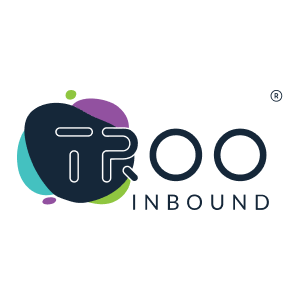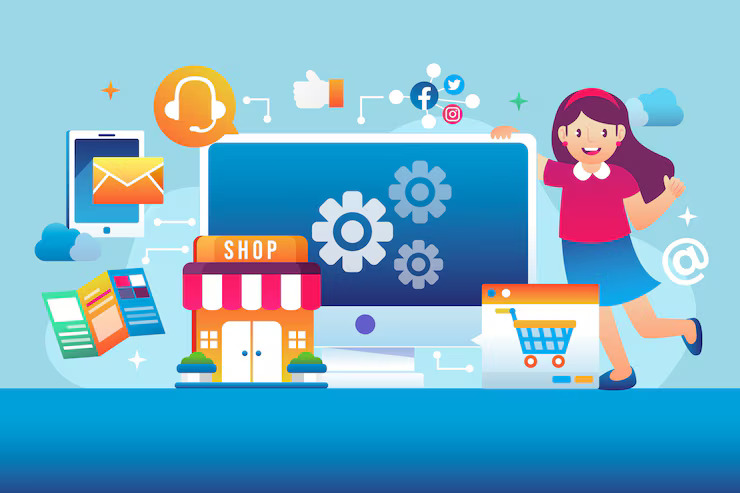Effortless Weebly to Shopify Migration Guide
 TRooInbound
TRooInbound
Introduction
A. Overview of Weebly and Shopify
Weebly: A user-friendly website builder with basic e-commerce functionalities. Ideal for creating simple online stores with limited product offerings.
Shopify: A dedicated e-commerce platform offering robust features for managing complex stores. Built for businesses seeking scalability, advanced marketing tools, and a wide range of integrations.
B. Importance of Choosing the Right Platform for Your Online Store
Impact on business growth and scalability: As your business grows, Weebly's limitations in product management, marketing, and customization can hinder your expansion. Shopify empowers you to scale your store effortlessly, accommodating an increasing product range and customer base.
Enhancing user experience and functionality: Weebly's website builder approach might lead to a less intuitive shopping experience for customers. Shopify offers a dedicated admin panel for managing products, orders, and marketing campaigns, streamlining operations and improving user experience.
C. Purpose of the Guide
This comprehensive guide aims to equip businesses with the knowledge and tools needed to transition from Weebly to Shopify smoothly. It provides clear step-by-step instructions, best practices, and valuable insights to ensure a successful migration process.
Preparing for Migration
A. Assessing Your Current Weebly Store
Inventory of products and categories: Take an accurate count of your products, their categories, variants (e.g., size, color), and ensure data is well-organized for efficient migration.
Reviewing current site design and layout: While a complete redesign might be considered later, analyzing your Weebly store's current layout and identifying key elements to be transferred to Shopify streamlines the process.
B. Understanding the Features of Shopify
Key features and benefits of Shopify: Explore the powerful features Shopify offers, including product management tools, inventory tracking, built-in marketing functionalities, secure payment gateways, and a vast app store for extending functionality.
Comparing Shopify plans and pricing: Shopify offers various pricing tiers to cater to different business needs. Carefully evaluate your requirements and choose the plan that best suits your budget and growth potential.
C. Creating a Migration Plan
Setting clear goals and timelines: Establish measurable goals for your migration, such as improved conversion rates or increased sales within a specific timeframe. Set realistic deadlines for each migration stage to maintain momentum.
Identifying necessary tools and resources: Research and identify additional tools like third-party migration services or design assets that might be needed for a smooth transition.
Setting Up Your Shopify Store
A. Registering for a Shopify Account
Choosing the right Shopify plan: Utilize the knowledge gained from comparing plans to select the one that aligns best with your business needs and projected growth.
Initial setup steps: Follow Shopify's intuitive setup process, including providing essential information like store name, contact details, and payment method.
B. Customizing Your Store Design
Selecting and installing a Shopify theme: Explore the vast theme library within Shopify or consider purchasing a premium theme that aligns with your brand aesthetic and desired functionality.
Customizing the theme to match your brand: Utilize Shopify's theme customization options to tailor the theme's colors, fonts, and layout to accurately reflect your brand identity and provide a cohesive customer experience.
C. Adding Essential Apps and Plugins
Must-have apps for functionality and performance: Discover a wide range of apps in the Shopify App Store to enhance your store's functionalities, such as abandoned cart recovery, loyalty programs, email marketing tools, and product review platforms.
Integrating third-party tools: Integrate any existing business-critical tools like accounting software or shipping platforms with Shopify to ensure a seamless workflow after migration.
Migrating Your Content
A. Exporting Data from Weebly
Exporting product data: Utilize Weebly's export functionalities to download a CSV file containing all your product information, including names, descriptions, images, categories, variants, and pricing.
Exporting customer and order data: Download your customer data (with proper consent management) and historical order information from Weebly in a format compatible with
B. Importing Data into Shopify
Using Shopify's import tools: Shopify offers user-friendly import tools to upload your exported CSV files containing product, customer, and order data. Ensure the data is formatted correctly for accurate import.
Ensuring data accuracy and completeness: Double-check the imported data for any inconsistencies or missing information. Clean up the data and rectify any errors before finalizing the import to maintain data integrity in your Shopify store.
C. Migrating Design Elements
Recreating page layouts: While Shopify themes offer a degree of flexibility, rebuilding your Weebly store's page layouts within the new theme might be necessary. Focus on replicating the core user journey and key elements for a familiar customer experience.
Transferring media and images: Download all product images, logos, and other visual assets from Weebly and upload them to your Shopify media library. Ensure proper image optimization for faster loading times and a positive user experience.
Setting Up Shopify Features
A. Product Management
Organizing products and categories: Utilize Shopify's robust product management tools to organize your products into clear, relevant categories. Leverage subcategories for a well-structured product hierarchy that facilitates easy navigation for customers.
Setting up product variants and options: If your products have variations like size, color, or material, define these options within Shopify to provide a seamless buying experience for customers with specific needs.
B. Payment and Shipping Settings
Configuring payment gateways: Shopify integrates with a wide range of secure payment gateways like Stripe or PayPal. Choose a payment gateway trusted by your target audience and ensure a smooth checkout process.
Setting up shipping rates and methods: Define your shipping rates and methods based on your business needs and customer preferences. Offer various shipping options (e.g., standard, expedited) to cater to different customer requirements.
C. SEO and Marketing Tools
Optimizing your store for search engines: Utilize Shopify's built-in SEO tools to optimize your product descriptions, page titles, and meta descriptions with relevant keywords to improve your store's ranking in search engine results pages (SERPs).
Utilizing Shopify's marketing tools: Explore Shopify's marketing tools for email marketing campaigns, discount codes, and abandoned cart recovery strategies to attract new customers and retain existing ones.
Testing and Launching Your Store
A. Performing Pre-Launch Testing
Checking functionality and user experience: Thoroughly test all functionalities of your Shopify store from a customer's perspective. Ensure a smooth navigation experience, clear product information, and a user-friendly checkout process.
Testing the checkout process: Make several test purchases using different payment methods and shipping options to identify and rectify any issues with the checkout flow before going live.
B. Addressing Common Migration Issues
Resolving data discrepancies: Anticipate potential data discrepancies during the import process. Be prepared to identify and rectify any inconsistencies in product information, pricing, or customer data.
Ensuring all integrations are working: Verify that all third-party tools and integrations you set up in Shopify are functioning correctly to maintain seamless workflows after migration.
C. Going Live
Final pre-launch checklist: Review a final checklist encompassing all aspects of your store, including product listings, pricing, shipping options, payment gateways, and SEO optimization before launching.
Launching your Shopify store: Once everything is thoroughly tested and optimized, hit the "publish" button to make your new Shopify store live and accessible to customers.
Post-Migration Tips
A. Monitoring Your Store’s Performance
Using analytics tools: Leverage Shopify's built-in analytics tools and integrate with Google Analytics to track key performance indicators (KPIs) like website traffic, conversion rates, and customer behavior.
Tracking key performance indicators (KPIs): Monitor essential metrics like website traffic, conversion rates, and average order value to identify areas for improvement and optimize your Shopify store for better performance.
B. Continuous Improvement
Gathering customer feedback: Actively solicit feedback from your customers through surveys or reviews to understand their experience and identify areas for improvement in your store's design, functionality, or product offerings.
Implementing improvements and updates: Based on your data analysis and customer feedback, continuously implement improvements and updates to your Shopify store, ensuring it remains competitive and user-friendly.
C. Leveraging Shopify Support and Community
- Accessing Shopify support resources: Shopify offers a wealth of support resources like documentation, tutorials, and webinars to assist you with any questions or challenges arising after migration.
Frequently Asked Questions (FAQs)
A. What are the main differences between Weebly and Shopify?
Focus: Weebly is a general website builder with basic e-commerce capabilities, while Shopify is a dedicated e-commerce platform built for managing complex online stores.
Scalability: Weebly's limitations become evident as your business grows. Shopify offers scalability to accommodate a larger product inventory and customer base.
Features: Shopify boasts a wider range of built-in features and functionalities for managing products, marketing, and customer relationships compared to Weebly.
Customization: Weebly offers limited design customization options. Shopify provides greater flexibility for tailoring your store's design to your brand identity.
B. How long does the migration process take?
The migration timeframe varies depending on the complexity of your Weebly store:
Simple stores: A few hours to a day for basic stores with a limited product range and straightforward design.
Complex stores: Several days or even weeks for larger stores with extensive product catalogs, intricate layouts, and custom functionalities.
C. Can I keep my current domain name when migrating to Shopify?
Absolutely! Shopify allows you to connect your existing domain name to your new store. This process typically involves modifying your domain registrar's DNS settings to point to Shopify's servers.
D. Will my SEO rankings be affected during the migration?
While some temporary fluctuations in SEO rankings might occur during the migration, there are steps to minimize the impact:
Maintain consistent URLs: If possible, try to maintain the same product and category URLs during the migration to minimize disruption to search engine indexing.
301 redirects: If URL changes are unavoidable, implement 301 redirects from your old Weebly URLs to the corresponding new Shopify URLs, signaling search engines about the change and preserving SEO value.
High-quality content: Focus on creating high-quality product descriptions and engaging content for your Shopify store to maintain strong SEO performance.
Conclusion
A. Recap of Key Points
Thorough preparation and planning: A well-defined plan with clear goals, timelines, and identified resources streamlines the migration process and minimizes disruptions.
Benefits of migrating to Shopify: Shopify empowers you with robust features for managing your online store, facilitating scalability, and enabling growth.
B. Encouragement to Take Action
Migrating to Shopify opens doors for your business to flourish online. With its powerful features and intuitive interface, Shopify equips you to:
Manage a thriving online store: Efficiently manage your product inventory, orders, and customer information all within one centralized platform.
Reach a wider audience: Shopify provides built-in marketing tools and a vast app store to amplify your marketing efforts and attract new customers.
Scale your business with ease: Shopify accommodates the growth of your business, allowing you to add more products, manage a larger customer base, and achieve your entrepreneurial goals.
Subscribe to my newsletter
Read articles from TRooInbound directly inside your inbox. Subscribe to the newsletter, and don't miss out.
Written by

TRooInbound
TRooInbound
Elevate Your Digital Presence: Web Dev & Digital Marketing Insights for Limitless Growth!